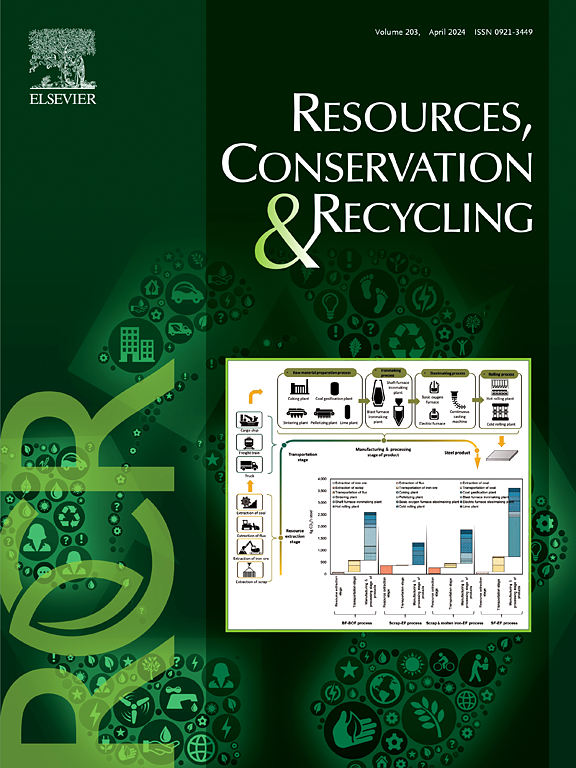Decarbonizing the Asian steel industries through green Hot Briquetted Iron trade
IF 10.9
1区 环境科学与生态学
Q1 ENGINEERING, ENVIRONMENTAL
引用次数: 0
Abstract
The Asian steel industry produces 73 % of global steel and is expanding. The speed and plans for decarbonizing the Asian steel sector are thus globally important. Importing green Hot Briquetted Iron (HBI), iron ore reduced to iron with renewable hydrogen, from renewable-rich countries such as Australia, Brazil and South Africa, could be a good option to avoid constraints with access to renewables. However, the effects of green-HBI-trade on Asian steel decarbonization strategies have not yet been studied. We use an optimization model, spanning from 2023–2070, to evaluate whether green-HBI-trade can help Asia to achieve Nationally Determined Contributions and Paris Agreement. We found that HBI-trade could accelerate the phase-out of BF-BOF steel by 2 to 5 years and reduce BF-BOF steel production by 2 Gt, thus lowering the cumulative CO2-emissions from the steel sector by 4 Gt. Consequently, current plans to expand BF-BOF capacity may lead to stranded assets when steel is decarbonizing.

通过绿色热压块铁贸易使亚洲钢铁工业脱碳
亚洲钢铁工业的产量占全球的73%,而且还在不断扩大。因此,亚洲钢铁行业脱碳的速度和计划具有全球重要性。从澳大利亚、巴西和南非等可再生能源丰富的国家进口绿色热压块铁(HBI),即用可再生氢将铁矿石转化为铁,可能是避免可再生能源限制的一个好选择。然而,绿色贸易对亚洲钢铁脱碳战略的影响尚未得到研究。我们使用一个跨越2023-2070年的优化模型来评估绿色hbi贸易是否能够帮助亚洲实现国家自主贡献和《巴黎协定》。我们发现,HBI-trade可以将BF-BOF钢的淘汰速度加快2至5年,并将BF-BOF钢的产量减少2亿吨,从而使钢铁行业的累计二氧化碳排放量减少4亿吨。因此,目前扩大BF-BOF产能的计划可能会导致钢铁脱碳时资产搁浅。
本文章由计算机程序翻译,如有差异,请以英文原文为准。
求助全文
约1分钟内获得全文
求助全文
来源期刊

Resources Conservation and Recycling
环境科学-工程:环境
CiteScore
22.90
自引率
6.10%
发文量
625
审稿时长
23 days
期刊介绍:
The journal Resources, Conservation & Recycling welcomes contributions from research, which consider sustainable management and conservation of resources. The journal prioritizes understanding the transformation processes crucial for transitioning toward more sustainable production and consumption systems. It highlights technological, economic, institutional, and policy aspects related to specific resource management practices such as conservation, recycling, and resource substitution, as well as broader strategies like improving resource productivity and restructuring production and consumption patterns.
Contributions may address regional, national, or international scales and can range from individual resources or technologies to entire sectors or systems. Authors are encouraged to explore scientific and methodological issues alongside practical, environmental, and economic implications. However, manuscripts focusing solely on laboratory experiments without discussing their broader implications will not be considered for publication in the journal.
 求助内容:
求助内容: 应助结果提醒方式:
应助结果提醒方式:


